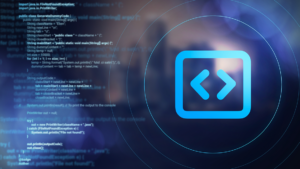

Madhushree Bharati
Social Media Intelligence (SOCMINT) for Fraud and Criminal Forensics
Today social media is a place where people post almost everything. The casualness of people’s social profiles has increased the possibility of information leakage making social networks a new place of communication for scammers who execute fraud. Social media also helps cyber investigators to get hold of the cyber criminals.
The intelligence family has been growing. From IMINT (Imaginary Intelligence), HUMINT (Human Intelligence), SIGINT (Signals Intelligence) to SOCMINT (social media intelligence), security is now all ready to clean up cyber threats.
In this age when social media is abundant, it is the concern of the security communal to acknowledge SOCMINT into the national intelligence agenda, but only if two vital tests are approved. First, that it should be based on strong operational foundation of assemblage, proofs, authentication, and submission. Second, that the moral hazard it entails should be one which can be legitimately managed. This article offers an outline for how this can be done. Listing down a few social media intelligence tips for Fraud and Criminal Forensics:
#1 Tools, Tips and Tricks from Online Social Media
Investigators often miss or underutilize the social media resources in investigating cyber criminals. Like in any other communities, where frauds and criminals exist, in the social media community also, frauds do exist. Hence, in every community, investigators need to know the tools and tips against cybercrime protection.
The undercover investigation officers are now in a world where internet caching data and face recognition algorithm make it possible for them in finding out the location of posting an image a decade ago. The engaging of geolocation and social networking allows investigators to find out newer tricks of an investigation.
#2 Facebook: Where Criminals find easy access to Data Exploitation
Over thousands of social networking sites, Facebook has the most population of over 1.1 billion profiles. With 200 million status updates every day, Facebook account settings, data backup, and common frauds take place regularly.
#3 Obligations Concerning Online Social Media
The interlocking of geolocation and mobile devices help investigators find new investigation tools and techniques. While doing so there are risks related to privacy associated with the public and private data related to social media and networking. The social media activities of employees and their available data on the public platform are threats and challenges to cybersecurity.
#4 What Cyber Investigators Should Recognize About Covering Identity on the Internet?
Cyber investigators should know how criminals hide their identity on the internet. Hiding one’s identity is an opportunity for the investigators, while the same becomes a challenge when the same applies to cybercriminals. Using different methods of hiding their identity while working on the internet allows the cyber police to involve in secret online research while availing a path for the cybercriminals to involve in sneaky interaction in persistence to evil on-going.
#5 Open Source Intelligence (OSINT)
Investigators should make use of open source intelligence (OSINT), which involves gathering and acquiring information from open sources and then using it to reform legal intelligence. Since online marketing has speeded up all over the internet, so OSINT is now a serious factor for both investigators as well as cybercriminals. Investigators need to differentiate between the comments and interferences of big online gossips and discussions.
Related Insights


Building an Effective IT Software Project Test Strategy



